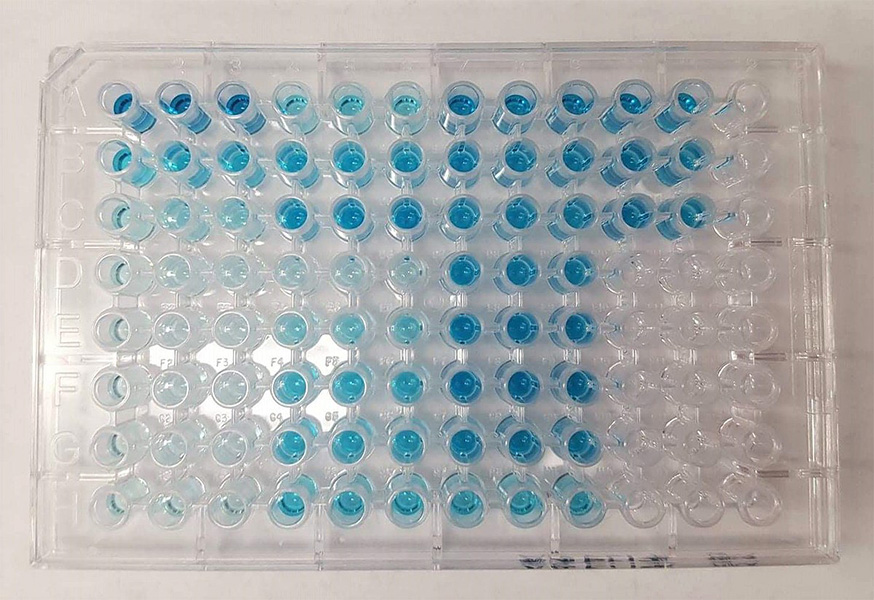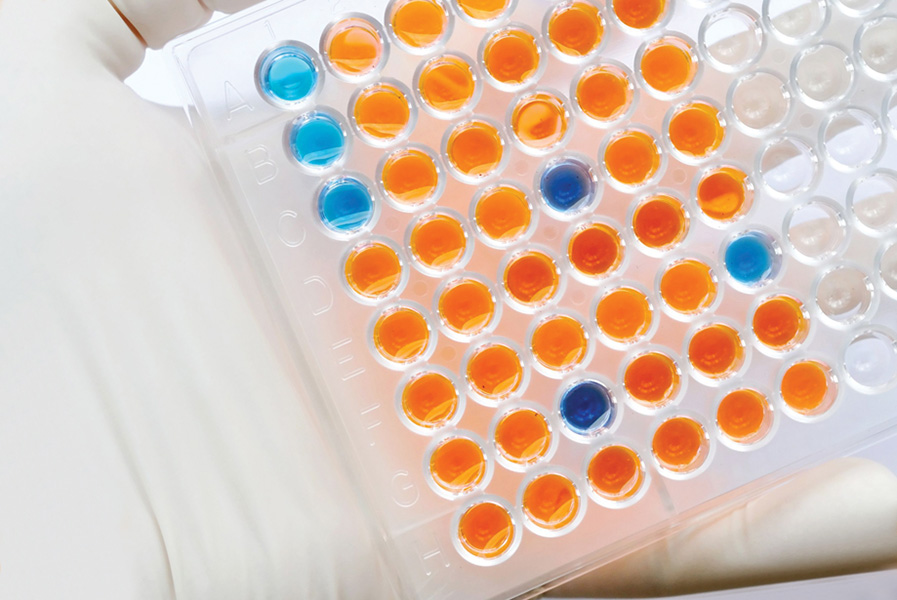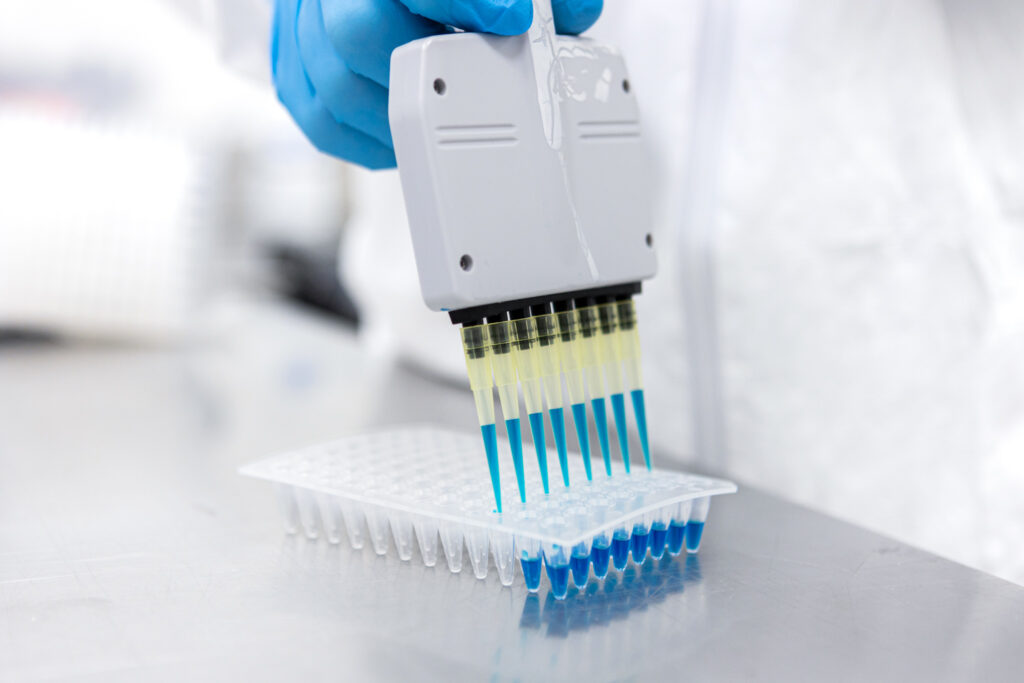ELISA, or enzyme-linked immunosorbent assays, is a powerful tool for research and development that follows the basic principle of an antibody binding to a specific antigen epitope.
ELISAs have a wide variety of applications in life science research, including biomarker screening in disease diagnostics, pregnancy tests, serum antibody detection for virus testing, and allergen detection. ELISAs can also be used to detect peptides, proteins, antibodies or hormones in biological samples.
In recent years, there are many innovations in the field of ELISA, with new methods and applications being developed constantly.
Here, we will take a look at some of the more notable innovations in ELISA technology.
Choosing the right ELISA format
Choosing the right ELISA format is essential for successful results. The ELISA method you select should be based on the nature of your sample and the molecules you are trying to detect.
There are four major types of ELISAs which are direct, indirect, sandwich and competitive. Each ELISA type has been developed with alterations to the basic methodology to give different suitabilities for different applications – for example, direct ELISA is the most popular for antibody detection, while sandwich ELISA is used more often for protein detection.
Let’s take a look at each one in more detail.
1. Direct ELISA
Direct ELISA is widely considered the simplest format. When using direct ELISA, the sample antigen is precoated onto a wellplate and incubated with a primary antibody directly conjugated to the detection molecule, resulting in a measurable change (e.g., colour) when a substrate is added. No secondary antibody is required for sample detection, reducing cross-reactivity and simplifying workflows.
2. Indirect ELISA
Indirect ELISA is a two-step detection process. First, a primary antibody (specific to the precoated sample antigen) is added. Secondly, a labelled secondary antibody specific to the host species of the primary antibody is added.
Because more than one secondary antibody can bind to the primary, the detection signal is amplified to give higher sensitivity than Direct ELISA.
3. Sandwich ELISA
The most commonly recognised format is sandwich ELISA. Sandwich ELISA requires a matched antibody pair, with each antibody specific to different epitopes of the target antigen:
- one is precoated onto a wellplate to capture the sample antigen, and
- the other is conjugated to facilitate detection.
The detection signal is directly proportional to the sample concentration and can therefore be used, alongside a set of calibration standards, to quantify the target antigen.
The high sensitivity and specificity of a sandwich ELISA enables accurate detection at low sample concentrations. However, cannot detect small antigens such as peptides, hormones or lipids.
4. Competitive ELISA
Competitive ELISAs, which depend on the detection of signal interference, are highly sensitive and do not require separate binding epitopes.
The sample antigen competes with a pre-coated reference antigen for binding to a specific amount of labelled antibody. The higher the concentration of the sample antigen, the less reference antigen will bind the labelled antibody, and the weaker the detection signal. The signal concentration is inversely proportional to the amount of sample antigen present.
Competitive ELISAs are most often used to detect small antigens.

Life science innovation using ELISA-based methodologies
There are many examples of ELISAs being used to drive innovation in research.
A recent paper titled ‘A Novel ELISA test to detect soy in highly processed foods’ compares indirect and sandwich ELISA methods for the detection of trace amounts of soy allergens in processed food (1).
- Both methods were developed using rabbit polyclonal antibodies against the target protein, heat-denatured glycinin, and
- the sandwich ELISA could successfully differentiate the majority of commercial foods containing soy or its derivatives.
Another paper, titled ‘Establishment of sandwich ELISA for quality control in rotavirus vaccine production”, describes the development of three genotype-specific sandwich ELISAs for the truncated spike protein VP4 on the rotavirus (2).
The ELISAs determined the adsorption rate of the VP4 antigens, as well as monitored the lot-to-lot consistency and stability of different VP4 antigens in vaccine stocks.
As summarised in ‘Current advances in prognostic and diagnostic biomarkers for solid cancers: Detection techniques and future challenges’, ELISAs also underpin recent advances in prognostic and diagnostic biomarker screening for the early detection of common solid cancers, such as breast, prostate, lung, stomach, and colorectal cancer (3).

ELISAs demonstrated high specificity and high sensitivity to a range of cancer biomarkers, including vascular endothelial growth factors, matrix metallopeptidase 9, IL-6 and IL-8.
The versatility of ELISA testing gives it a critical role across life science research, from clinical to industry. As ELISA methods continue to develop, research will advance towards more effective diagnostic and screening tests.
Thank you for choosing iST for your lab equipment, it is a pleasure to serve you.
Contact us for guidance and support from selection through to after-care of any of our products.
References:
1. Segura-Gil, I. et al. A novel ELISA test to detect soy in highly processed foods. Journal of Food Composition and Analysis 106, 104303 (2022).
2. Li, C. et al. Establishment of Sandwich ELISA for Quality Control in Rotavirus Vaccine Production. Vaccines 10, 243 (2022).
3. Pal, M., Muinao, T., Boruah, H. & Mahindroo, N. Current advances in prognostic and diagnostic biomarkers for solid cancers: Detection techniques and future challenges. Biomedicine & Pharmacotherapy 146, 112488 (2022).

